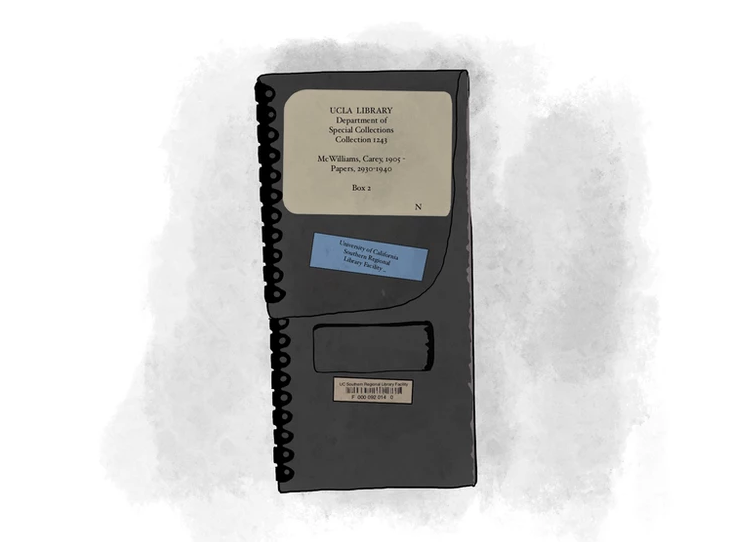Earlier this year, I enrolled in a graduate seminar under the IH-210 series. The course, "Race, State, and Power" attracted a small cohort of like-minded students that met every Thursday evening in the southeast corner of UCM's Social Sciences and Management (SSM) building. I didn't know it then but entering that compact space in SSM introduced me to the world of speculative fiction—a world with imaginative futures that have helped me cope with the current state of the world. Our assigned weekly readings fused critical history with fiction and my life would never be the same. My research methods were in for a surprise as well.
Our assigned weekly readings fused history with fiction and my life would never be the same.
I should really preface the statements above with an important global event. Yes. Half-way through the spring semester, the COVID-19 pandemic erupted. Our campus (and virtually every public space on earth) closed up shop and scrambled for safety measures—I watched on, indoors, in absolute fear and perpetual doom. However, speculative and historical fiction novels offered escape from otherwise bleak weeks. The geographies and characters that solely existed in Fernando Flores' futuristic take on the US-Mexico borderlands in Tears of the Trufflepig helped me grasp for something other than the declension narratives pouring through social media and the evening news. The fiction, albiet odd, offered respite when I needed it most. And, those novels helped me hang on to thoughts of a future where things eventually get better. After reading Flores' work, I craved for more to counter what felt like the end of the world. In-between a seemingly endless reading list to prep for my PhD comprehensive exams, I sought out more speculative fiction to imagine the better world that I longed for. (The latest novel in my growing list to cope with 2020 is Kiik Araki-Kawaguchi's The Book of Kane and Margaret—a dream-pop speculative fiction novel that takes on WWII-era Japanese internment in ways you've probably never imagined.)
Indeed, speculative fiction has helped me explore new methods to share my research publicly.
Aside from coping, though, these creative interpretations of the past, present, and future have helped me apply creative outlets to better tell my dissertation project. Indeed, speculative fiction has helped me explore new methods to share my research publicly. Art has always played an important role in my life, but it had never crossed my mind to integrate art with my dissertation research. That is, not until fairly recently. Since the spring semester, speculative and historical fiction has guided my academic thinking alongside the development of illustrations to accompany my work. As it stands, this has developed into two creative projects to communicate my work with a much broader audience. For example, I'm collaborating on a reader-friendly ten-page bilingual comic book on California water governance with a local Central Valley artist. That little comic book is on its way to becoming a resource for rural communities of color throughout the state in the fight for clean drinking water. It's also part of a grant funded project through the Henry Luce Foundation on campus.
... I've envisioned a graphic novel component to accompany each chapter of my dissertation.
Additionally, I've envisioned a graphic novel component to accompany each chapter of my dissertation. The intention here is to share historical events and important actors through illustrations and short stories that communicate major topics in my dissertation work. In this sense, someone who likes what they see and read on my graphic novel can then learn more detailed information by critically engaging with the accompanying text—this, of course, would be the traditional chapter format of my dissertation. (To illustrate that concept, I've provided an illustrated take on a Special Collections item from UCLA's Charles E. Young Research Library. While on a fellowship last summer, the contents in that Special Collections box introduced me to Imperial Valley history that is helping me piece together the past in relation to the present. I didn't know it then, but the photographs in that box would serve as inspiration for the creative works I've embarked on.)
... I'm drawn to speculative and historical fiction as a method to conceptualize alternate realities in the Imperial Valley—an alternate future without technological domination over nature, environmental degradation, exploited labor, or racist immigration laws.
To say the least, things have undoubtedly changed this year. That's in no way limited to the points I touched on above. To be sure, they've influenced where I'm at and where I'm headed with my research. These days I'm drawn to speculative and historical fiction as a method to conceptualize alternate realities in the Imperial Valley—an alternate future without technological domination over nature, environmental degradation, exploited labor, or racist immigration laws. Imagining that future is part and parcel with getting to the better and more just world that I want to be part of. And, while that better world may not seem so possible at the moment, it couldn't hurt to try and picture it. In the same way, it just might help imagine a route that speaks it into existence.
About the illustration above: This is a drawing I made of a UCLA Special Collections box—one of the many boxes filled with files that I sorted through during the summer in June of 2019. I'm currently brainstorming ways to create artistic renditions of historical documents (photographs, maps, newspapers, letters, and landscapes) to help tell a story of events covered in my dissertation. This is a creative approach that I'm experimenting with and the idea came through the speculative and historical fiction that has helped me cope with 2020. The goal of this creative component is to develop research methods that are not only more publicly accessible but more engaging than standard linear text.
